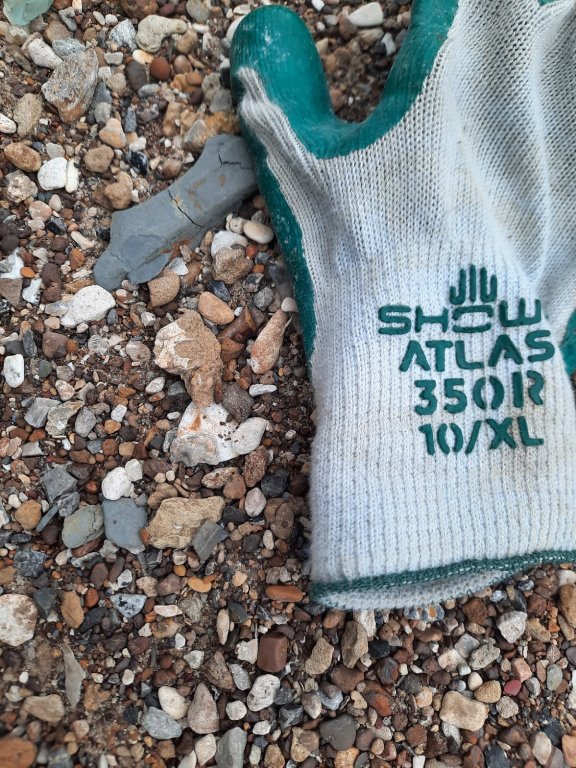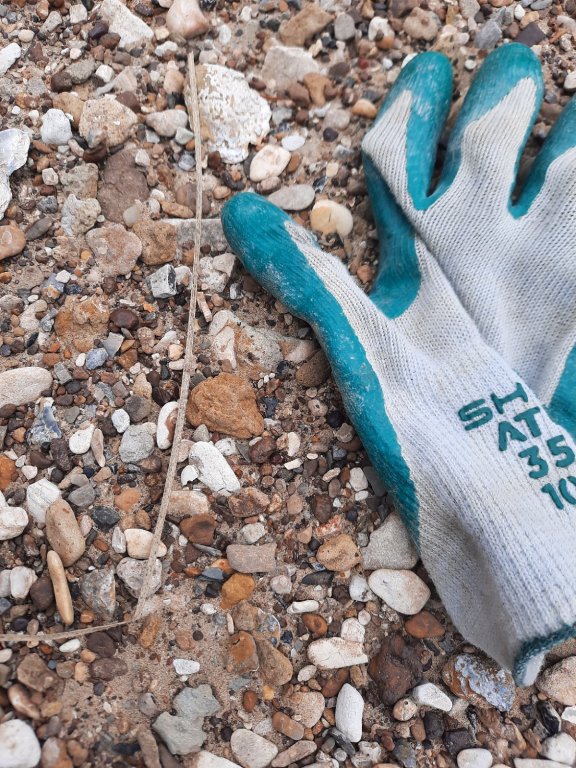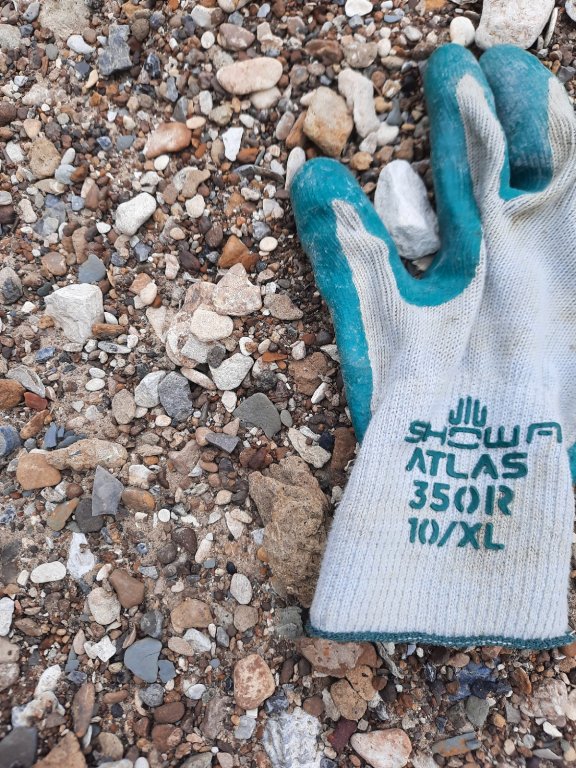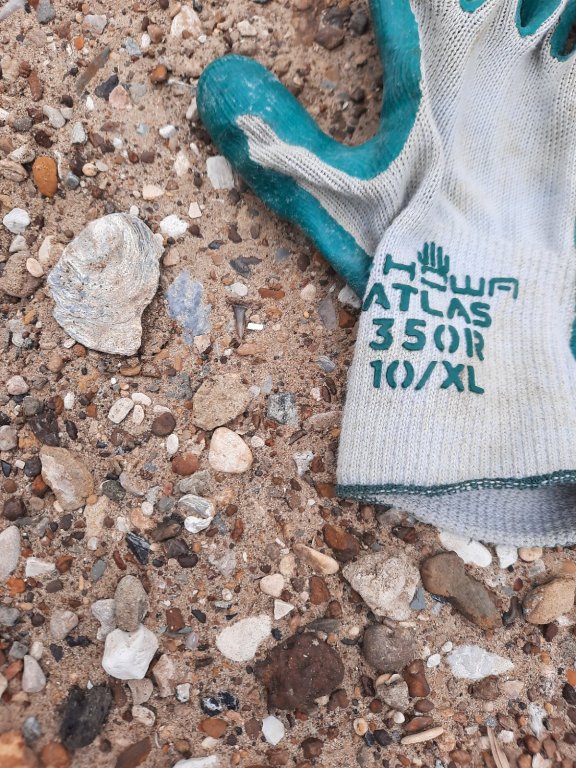I made another trip to Post Oak Creek yesterday. I visited a spot on the creek where I’d already been twice last year, in the first months of my fossil hunting. The conditions the second trip were much like yesterday, months of low water and very picked over. I didn’t find much that second trip. But I suspected that I have become much better at spotting tiny teeth on a gravel bar, and went back yesterday anyway. Judging from what I found, I must have been right.
There were lots of broken teeth again, and nothing spectacular or unusual enough to justify a post, but I do enjoy documenting my trips, and have a question about one of the bones, so here I am. First, some in situ photos. The tooth in photo 6 is pretty hard to see. Hint: it’s a Ptychodus tooth. Click the photos to be able to zoom in and get a closer look.
I ended up bringing home 6 Ptychodus teeth, over 100 other teeth, 4 rocks with teeth in them, several bones, and one gastropod.
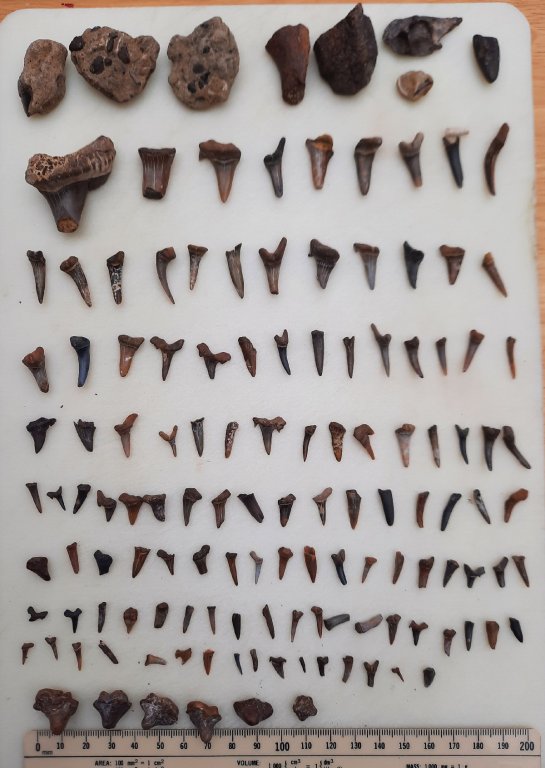
A real shame this tooth is broken. Even with one side of the root broken off, and half the cusp missing, this is still the largest tooth I’ve ever found.
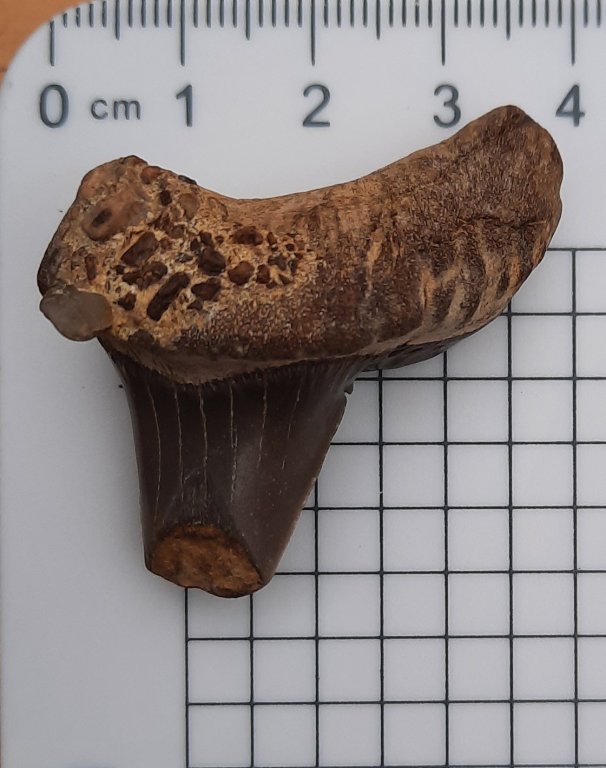
This is another tooth that would have been really large if there wasn’t so much of it missing.

The next largest tooth, missing one cusplet and half its root.

Here are some of the more striking smaller teeth. I used to not be able to spot many teeth this size in all that gravel. There’s something to be said for getting down on knees and elbows, and for getting your eyes trained.



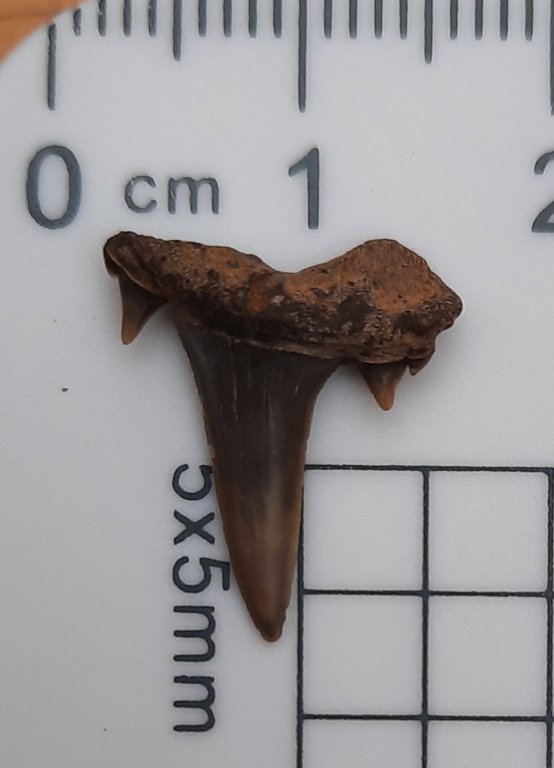
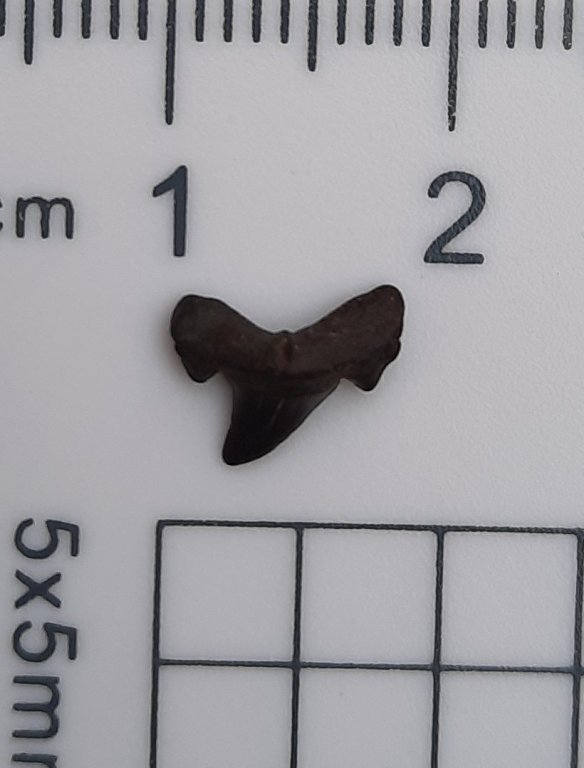
Half the root is missing from this tooth. I thought it was interesting how large the cusplet is, compared to the main cusp.
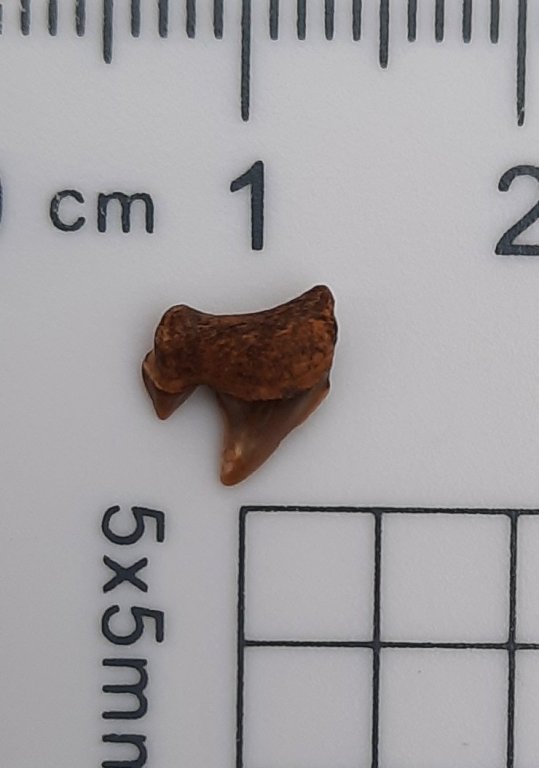
Here is the largest of the Ptychodus teeth.

To me, this was the most interesting of the bones I picked up. On the first side, it’s just a flat surface, with an ordinary bone-looking finish. But on the second side is quite a raised pattern. I’ve asked in The Fossil Forum if anyone recognizes it.




